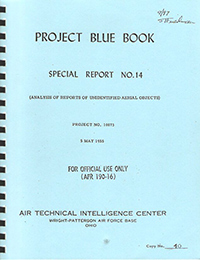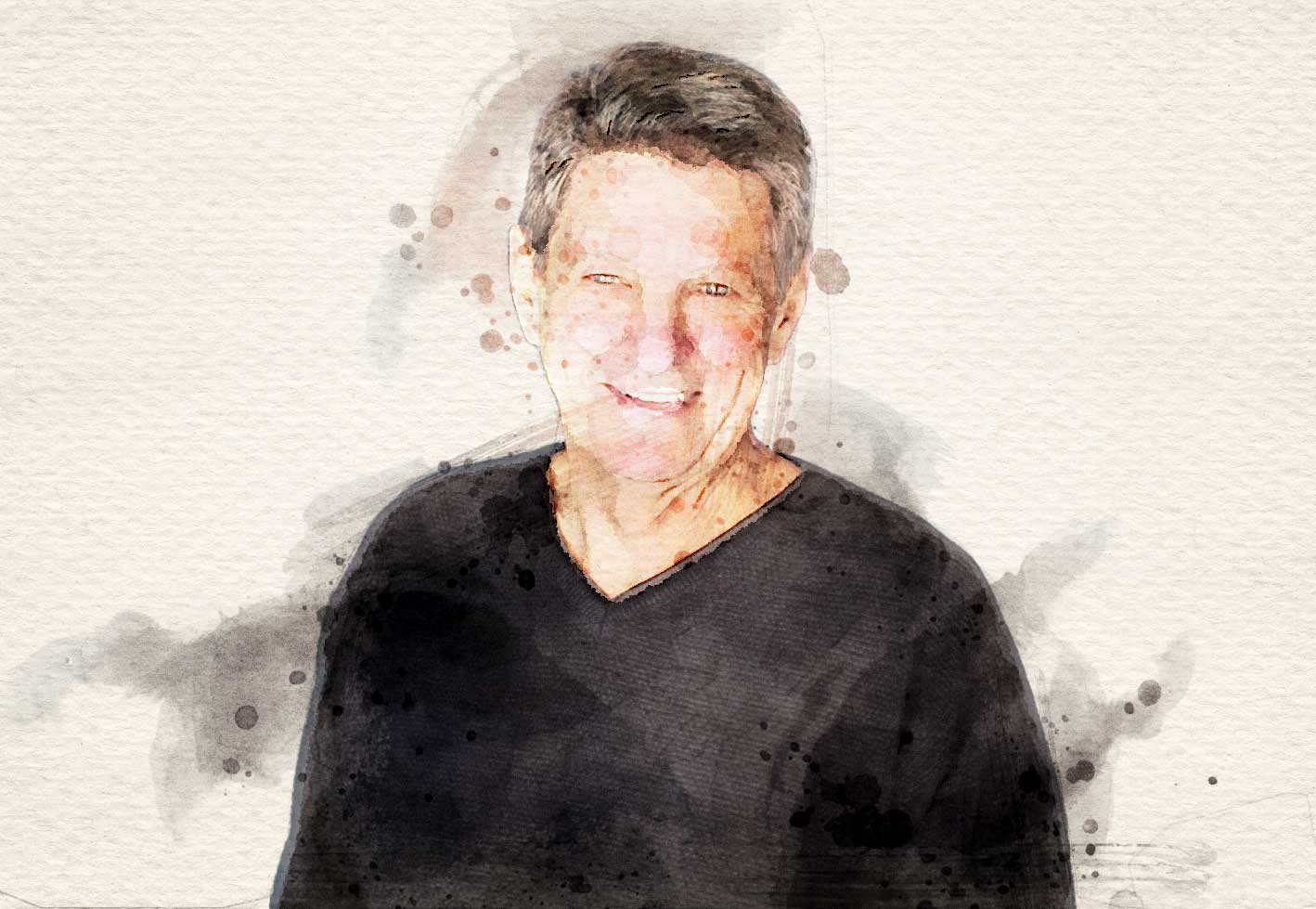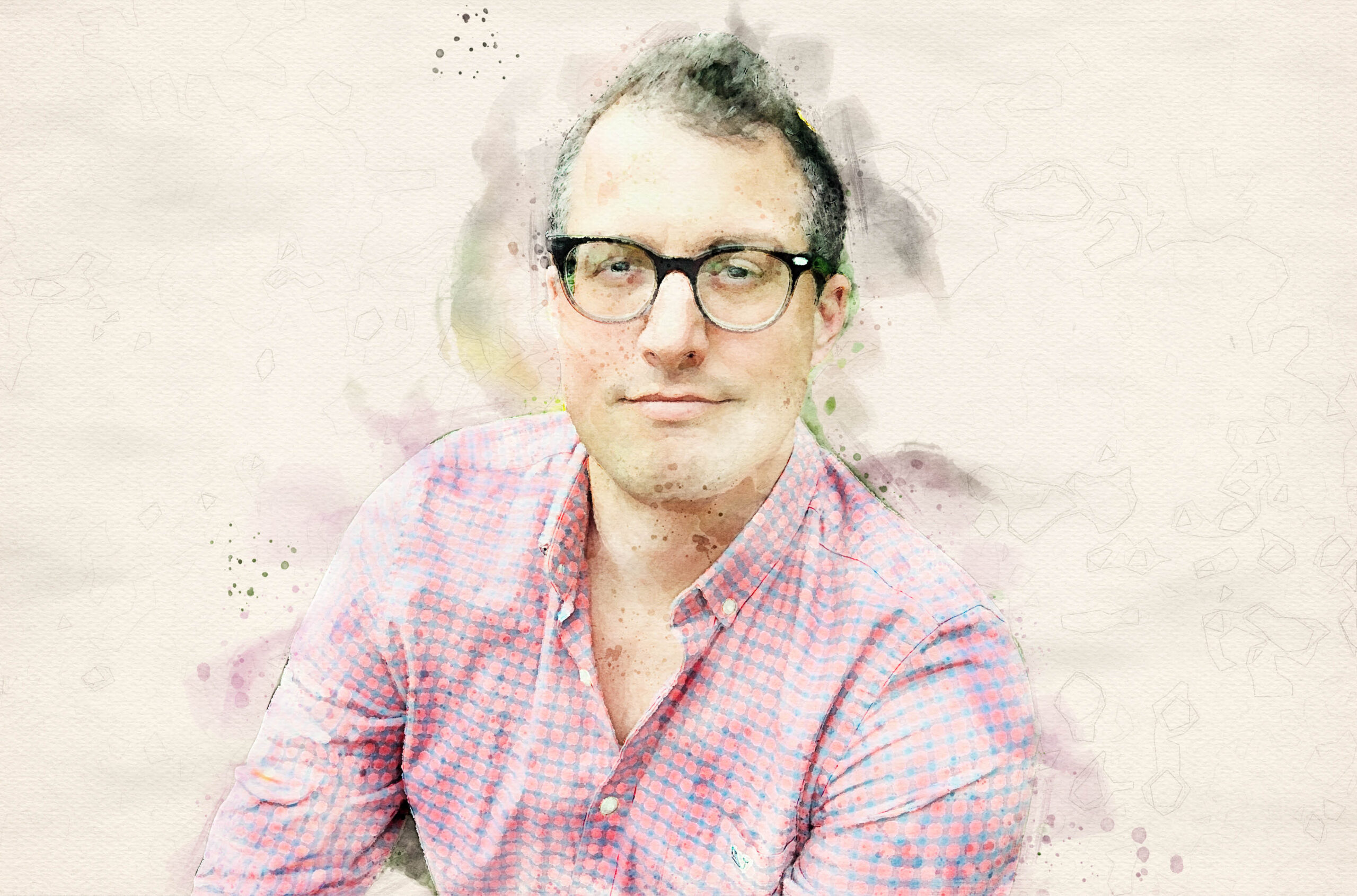Making sense of the paranormal
Researchers from various disciplines are seeking not to debunk strange events, but rather to understand how people engage with them, and what this reveals about the human experience.

Blinking orange lights cut across the night sky over Shag Harbour on October 4, 1967. Witnesses in the small Nova Scotia fishing village then saw what seemed to be an object crashing into the water. Fishermen and, later, authorities went out into the Atlantic to seek survivors. They saw some yellow foam bubbling on the water’s surface but no wreckage.
Newspapers reported on this strange sighting, the government investigated, and soon enough the incident was nearly forgotten. Then, around the time of the new millennium, a few books and documentaries started to come out about “Canada’s Roswell” (a reference to an incident in Roswell, New Mexico in 1947 that conspiracy theorists believed was a UFO cover-up). Now, the legacy fuels a mini-economy: the town has the Shag Harbour Incident Interpretive Centre and holds an annual festival that draws UFO enthusiasts to revisit the strange story, and to talk of aliens and government complicity.
This is more than just a quirky moment in Canadian history, but a rich vein of human experience that Noah Morritt, a PhD candidate in folklore at Memorial University, is mining for his thesis. He’s looking at Cold War politics, the evolution of the UFO legacy and the impact on locals, particularly devout Baptists. “It reveals the importance of tradition in community, and how we make sense of the world around us,” says Mr. Morritt.
He joins a growing but still relatively small group of researchers examining how people interact with the paranormal – UFOs, alien abductions, crop circles – things “beyond the scope of normal scientific understanding,” according to the Oxford English Dictionary. These researchers are not, in the main, out to prove or debunk the existence of such incidents, but rather are trying to understand what people do when they encounter something that they don’t … understand.
Sounds flaky, right? For “serious” academics, this might even be viewed as outside the bounds of legitimate inquiry. That would be a shame, says Paul Kingsbury, a professor in the department of geography at Simon Fraser University. Writing for The Conversation Canada, he notes: “enduring skepticism in the social sciences about the legitimacy of the claims about paranormal phenomena and experiences has resulted in a lack of critical studies on how people are actually engaging with the paranormal.”
These researchers contend that thinking differently about, and not judging, paranormal claims can yield important insights. “Can we discount an experience because it’s out of the ordinary and strange? I don’t think we can. We need to ask hard and critical questions about it,” says Mr. Morritt.
Those critical questions reveal pivotal issues around community, belief, tradition and knowledge. Ignoring the odd and unexplained has kept us from understanding some of the basics of the human experience, he says.
The start of serious academic work on the paranormal dates back to 19th-century Europe and the founding of the Society for Psychical Research in London in 1882. This group researched hypnotism, apparitions, spirit photography and seances, and was run by highly respected minds – Henry Sidgwick, who held the coveted title of Knightbridge Professor of Moral Philosophy at the University of Cambridge, was its first president.
“For a time, it was possible to be interested in both serious research and the fantastical, and document it in the same, professional ways,” says Christopher Keep, an associate professor of English at Western University. Of interest, says Dr. Keep, is that these “remarkable scientific efforts to study paranormal phenomenon were driven not so much by scientists but humanists.” Members of the Society for Psychical Research conducted both lab and field studies, coined the term “telepathy,” developed the first algorithm for determining the probability of a phenomenon happening by random occurrence and set early standards for collecting first-hand reports.
The American Society for Psychical Research, based in New York, was founded in 1885. In Canada, starting in the 1920s, Winnipeg physician Thomas Glendenning Hamilton observed Ouija boards and seances in a lab in his home. Dr. Hamilton, who was highly respected and served in the provincial legislature, gave frequent lectures on his privately funded research.
At the time, south of the border, this was a university-approved line of inquiry. “Ivy League schools were very interested in this topic,” says Beth Robertson, an instructor in the department of history at Carleton University. In the 1930s, Joseph Banks Rhine of Duke University founded the field of parapsychology, the study of paranormal and psychic phenomenon, championing scientific methods and making it clear the humanities should focus elsewhere. “You can blame or credit Dr. Rhine for that break” between the disciplines, says Dr. Robertson.
 Universities got in and out of the business of seeking proof of paranormal phenomenon over the next few decades. A group at the University of Colorado, for instance, was funded by the U.S. Air Force to study UFO phenomena from 1966 to 1968 under the direction of physicist Edward Condon. (Between the 1940s until 1969, the Air Force documented 12,618 sightings through its Project Blue Book, classifying 701 as truly “unidentified.”)
Universities got in and out of the business of seeking proof of paranormal phenomenon over the next few decades. A group at the University of Colorado, for instance, was funded by the U.S. Air Force to study UFO phenomena from 1966 to 1968 under the direction of physicist Edward Condon. (Between the 1940s until 1969, the Air Force documented 12,618 sightings through its Project Blue Book, classifying 701 as truly “unidentified.”)
But, by the mid-20th century, seeking proof of paranormal phenomena ran out of academic steam and lost credibility. Researchers were unable to replicate Dr. Rhine’s work on extrasensory perception, which many concluded was flawed. Today, both the U.S. and U.K. psychical societies are run as private organizations with no university affiliation. Parapsychology endures as a small, fringe field with a handful of mainly U.S.- and U.K.-based labs. Amateur sleuths took over tracking UFOs, sasquatches and ghosts.

That was how the field remained – until recently, when academics began to revisit the paranormal, but in a new way. They stopped asking what was real and instead mined beliefs, stories and experiences for their deeper revelations. While anthropology, folklore, religion and literary scholars have long dabbled in ghosts and magic, now it’s downright fashionable in these disciplines – and historians, geographers and others are joining in.
Christopher Laursen, who completed his PhD in history at the University of British Columbia in 2016 and is now a historian of religions, science and nature at the University of North Carolina Wilmington, counted 25 monographs with a historical or wider humanities angle between 1968 and 2000. That doubled to 50 between 2000 and 2014. He suspects there have been many more since, and his scan didn’t include book chapters.
Dr. Laursen did his thesis on poltergeists and lectures on the supernatural in the modern world. The supernatural “says a lot about who we are,” he writes on his website. “It reveals ‘grey areas’ where religion and science, culture and consciousness intermingle.”
In 2017, Trent University’s Laura Thursby and Matthew Hayes hosted “UFOs, Aliens, and the Academy: An Interdisciplinary Conference.” Mr. Hayes, who is doing his PhD in Canadian studies, met Ms. Thursby, a graduate student in cultural studies, by chance. The two organized the conference “to find out who was doing this work,” says Mr. Hayes. Numerous researchers showed an interest in presenting at the conference, most of them emerging scholars like themselves.
This revival connects to social factors, says Dr. Kingsbury at SFU. “Researchers are driven by popular culture,” he says. The decline in organized religion has led to what he calls the “re-enchantment of the West” in things such as yoga, Buddhism, crystals and New-Age spiritualism. Pop culture – think Harry Potter, Outlander, Game of Thrones – abounds with fantasy. And in some parts of the world, new unorthodox forms of religion are gaining converts.
“More and more, people seem to find that they require a more spiritual understanding of the world and our place in it,” says Kathryn Denning, an associate professor in the department of anthropology at York University, who writes about the ethics of the search for extraterrestrial intelligence. Yet, she says, there are contradictions: we applaud an Eat Pray Love-type spiritual quest, but deeply mistrust anyone who reports being haunted or abducted. Interesting dichotomies that, again, offer ample fodder for research.
Dr. Keep at Western writes about the late 19th century and the connection between emerging technology and the rise of psychical research. “The typewriter and the telegraph seemed to draw a connection between being able to communicate with spirits across distances. They started thinking that the world is not reducible to pure material understanding,” he says of many Victorians. Seances were the rage and literature embraced gothic tropes such as vampires and werewolves (Bram Stoker’s Dracula was published in 1897).
Dr. Robertson of Carleton notes that certain paranormal factors go in and out of fashion. “At one point, people thought ectoplasm was important,” she says. Some of her work has focused on the 1920s and ’30s, and how high-profile mediums – most of whom were women – were key to paranormal research, yet got little credit for their contributions.
Mr. Hayes, meanwhile, has been combing Library and Archives Canada in Ottawa to see how the Canadian government coped with the approximately 3,500 to 4,000 UFO sightings recorded from the 1950s to the 1990s. “One of the main conclusions I’ve drawn is that UFOs are basically a problem for the Canadian government that they don’t want to have,” he says. “They record it, they type it, they file it away, they forget about it. They never have any other conclusion than this is nonsense.” Their utter dismissal of it all likely fueled conspiracy theories.
Since the unknown happens “out there,” today’s researchers are again engaging more in field studies. Dr. Kingsbury is nearing completion of a four year study funded by a Social Sciences and Humanities Research Council Insight Grant to observe paranormal investigators. He’s gone on a dozen ghost investigations, attended numerous UFO and sasquatch conferences, and driven around rural England to visit crop circles. He’s looking broadly at who gets involved, what motivates them and how they share their data.
Many conference participants, he’s found, focus on one research object – often a “negative object,” like a ghost. He sees things like the plaster casts of large footprints as “the perfect object of desire – it’s just out of reach.”

But these groups defy easy generalizations: the haunted and abducted suffer judgment at home and attend conferences to therapeutically share stories, while other attendees are cynics keen to debunk the evidence they see. Some UFO sightings can be contradicted by official reports (the UFO sighting at Roswell, for instance, was later claimed by the Air Force to be a surveillance balloon). Those who confess to creating crop circles, when asked deeper questions, are revealed to be lying.
Ms. Thursby’s fieldwork at the UFO Festival held annually in Roswell, combined with her theoretical and historical research, has led her to draw parallels between the country’s Puritan history, the Salem witch trials, the rise of radio and today’s UFO followers. “They share the conspiracy theory version of the story, and that story is a better story than the official version,” says Ms. Thursby. She sees how generations of mistrust manifest in the conference’s unofficial motto: “Do your own research.” She connects the fear of extraterrestrial aliens and illegal aliens (jokey but clearly racist T-shirts sold at the festival show Mexican faces and the word “alien”), and today’s rise of fake news.
Across fields, academics writing on these topics must constantly prove their legitimacy. When Ms. Thursby and Mr. Hayes were organizing their conference at Trent, some professors voiced their concern on how this might reflect on the department. “They didn’t take too kindly to the idea. They thought we were trying to run a UFO alien convention and bring a bunch of crackpots to Trent,” says Mr. Hayes. When Ms. Thursby attended an academic conference in Europe and spoke about UFO enthusiasts, audience members seemed offended that she didn’t consider them psychologically unbalanced.
These scholars often find that their work collides with others’ beliefs and triggers assumptions about their own. “People always ask me, ‘Do you believe in ghosts?’” says Dr. Kingsbury. “To me, the question is more about desire.” Mr. Morritt at Memorial considers being in a place of not really knowing “a fun place to be” – a stance he’s constantly having to explain. Dr. Kingsbury is testing academic boundaries by doing a co-presentation with a non-academic researcher at a lay UFO conference. He finds the structure of these events deeply familiar, with their breakout sessions and keynote addresses, just like at regular academic gatherings. Many of these amateur researchers follow careful research protocols that their peers then critique.
“What we think of as real science and paranormal science, they both stem from the same thing: the drive to know the world,” says Dr. Robertson at Carleton. By ignoring the work of these amateur investigators, she says, the academic community may risk missing out on key information.
Mr. Morritt agrees. “They’re moving ahead with things – in many ways, we haven’t kept pace with what they’re doing.” There is still much to be gleaned from the complex interplay between the unknown and the lived human experience, he says. “As a field, it’s enormous.”
But, UFOs are real!
Retired associate professor of psychology Don Donderi researched visual perception and memory at McGill University and, starting in the 1960s, assessed the veracity of UFO sightings and alien abduction reports, publishing three peer reviewed papers on the subject. In his book, UFOs, ETs and Alien Abductions, which came out in 2013, he concludes that aliens have visited us and were involved in abductions, putting him at odds with most other academics. He believes a sort of cognitive dissonance has kept his work from being accepted more widely, particularly in academia. “People defend themselves against uncomfortable things,” he says, noting that lay people are more open to his ideas. “The academic world is very conservative in that way,” he says.













Post a comment
University Affairs moderates all comments according to the following guidelines. If approved, comments generally appear within one business day. We may republish particularly insightful remarks in our print edition or elsewhere.
3 Comments
I’m pleased to see attention paid to the amateur efforts in the paranormal research areas. I’ve studied amateur paranormal research groups in the U.S. and how they attempt to use what they perceive as scientific methods in their work. (Scientifical Americans: The Culture of Amateur Paranormal Researchers)
This is a very nuanced and multi-disciplinary topic that is generally ignored by those concerned with science and the public. These paranormal investigators reflect the public perception of what it means to do science. The authority they gain in the popular media and their communities shows a social need for such groups because scientists have abandoned the fields (for understandable reasons) and left the void to be filled by amateurs. With 3 million or more people watching paranormal tv shows every week, and half the population accepting of paranormal ideas, this is not something to be ignored.
Where you able to get this information from credible researchers?
HI..What I am curious about is the recent rise of even more interest in the paranormal…as evidenced by the popularity of paranormal topics on television channel T & E…Haunted Hotel..Celebrities and haunted homes, Haunted hospitals…Are viewers in North America and the UK simply searching for some meaning?
Further, I am interested in the commonalities of experiences that people report? Has anyone studied these “experiences” cross-culturally?